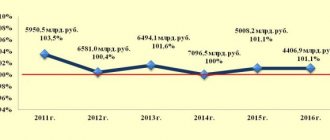Historical sketch of the development of customs legislation
Duties on items sold, as historians and legal scholars confirm, have been levied in Rus' since ancient times. Some scientists associate this process with the introduction of Christianity, others note that duties were levied earlier. A certain regulation of certain issues of customs affairs is presented in Russkaya Pravda.
The formation of a centralized state (center - Moscow) was accompanied by the development of a unified trade and customs policy. The main sources of customs law were the charters of the grand dukes.
Issues of customs taxation were reflected in the Code of Laws of 1550. The Council Code of 1649 already regulates in detail the procedure for appealing against illegal actions of duty collectors and determines sanctions for non-compliance with customs rules. The adoption of the Trade Charter in 1653 marked the transition from various customs duties to a single ruble duty. In addition, external customs duties were differentiated from internal ones, and benefits and privileges for foreign traders were abolished.
The New Trade Charter (1667) enshrined the principle of national preference in trade; The structure of customs and customs rituals were regulated. The system of customs authorities was established in the form of several links (levels). The central bodies were represented by: the order of the Great Treasury, the Great Customs, the Ambassadorial New Customs, Mytnaya Izba, the Stables Order, and the Pomernaya Izba. All of them were in Moscow. There were customs houses in the districts, and customs outposts on trade routes.
The customs legislation of the Peter the Great period was aimed at encouraging Russian producers. This was reflected in the ban on the import of goods that were successfully produced and supplied to the market by domestic producers. At the same time, the export from the country of raw materials necessary for Russian manufactories was complicated. The name of Peter I is associated with the development of the first customs tariff in Russia (1724), which is highly valued in Russian literature. The intention of Peter I was to ensure that customs taxation corresponded to the degree of development of Russian production. That is why duties are set in the range from 3 to 75% of the value of the goods. The successors of Peter I significantly reduced the tariffs.
The customs reform of 1753 eliminated internal customs borders. Following the creation of the border guard (1754), Cossack and customs guards were established, in which customs guards (one per 50 versts of the border) and customs inspectors (one per 10 versts) served.
The tariffs adopted during Catherine's period (1766 and 1782) were characterized by liberalization in relation to foreign trade and were marked by a reduction in duties on goods imported into Russia. These trends were further developed in the customs tariff of 1819. However, life showed that Russian industry was not ready to compete with European goods. She needed support. Therefore, the customs tariff of 1822 reflected protectionist tendencies. But along this path, negative aspects also arose, including the intensification of smuggling trade. This was only partly prevented by the improvement of customs protection, transformed in 1835 into a border service.
Intensive support in the second half of the 19th century. In many countries, the idea of free trade could not help but affect Russia. In the 50-60s. there was a desire to differentiate customs regimes. This is reflected in the exclusion of a number of territories from general rules by establishing duty-free trade in them (for example, Kamchatka, the Amur region, Sakhalin). The same trend is manifested in a reduction in customs duties on a number of goods (for example, on some types of raw materials, tea, coffee).
During this period, the system of customs institutions was determined by the Customs Charter for European and Asian Trade of 1857. In accordance with it, customs houses were established along the external land and sea borders of Russia, although internal customs offices were also preserved (Moscow, Chelyabinsk, etc.). Customs houses of one region were united into districts. Outposts were subordinate to customs. The largest customs houses had branches. The Charter emphasized the independence of customs districts, in whose activities local authorities had no right to interfere.
The implementation of the concept of free trade led to the 70s. to a significant excess of imports over exports, which gave rise to alarm in industrial circles. It is no coincidence that since 1876. Protectionist tendencies are again intensifying in customs policy. The tariff of 1891 was based on the principle of equal protection of all branches of industry. His credo: everything that is produced or can be produced in Russia has the right to count on customs protection.
With the development of customs rules and the growth of customs duties, the import of smuggled goods into the country is intensifying. The Customs Charter of 1892 recognized as smuggled goods delivered past customs or at least presented to it, but not reflected in cargo documents or in submitted advertisements. The sanctions provided for by the charter were differentiated depending on the fishing objects.
In 1893, the border guards were separated from the Department of Customs Duties into the Separate Border Corps. Corresponding changes followed locally.
The Customs Charter of 1910 gave customs authorities the right to search and seize contraband goods on their own initiative.
After the October events of 1917, the government abandoned the gradually established customs policy of pre-revolutionary Russia, establishing, by decree of December 29, 1917, state control over foreign trade through licensing entrusted to the People's Commissariat of Trade and Industry (NKTiP). A number of goods were generally prohibited from export. At the same time, the new government abandoned customs taxation as the main method of export-import transactions. By decree of April 22, 1918, the Council of People's Commissars of Russia announced the nationalization of foreign trade. A little later, customs authorities were recognized as central authorities and were managed by the People's Commissariat of Finance (NKF)2. The development of the procedure and organization of customs affairs at the border was a joint concept of the Border Guard and the Department of Customs Duties. In June 1918, the Department of Customs Duties under the NKF was renamed the Main Directorate of Customs Control, which became subordinate to the NKTiP, which was transformed in 1920 into the People's Commissariat for Foreign Trade (NKVT). All these events are the implementation of Lenin’s ideas about the state monopoly on foreign trade. During the period of war communism, customs issues were not marked by the adoption of any significant regulations. The transition to the NEP, however, stimulated the state's attention to customs issues. It is no coincidence that already on February 14, 1922, a tariff on export trade was approved, reducing duty rates on some goods, exempting others (for example, cast iron, rails), and increasing them on others. In 1924, tariffs were somewhat liberalized.
In December 1924, the Presidium of the Central Executive Committee of the USSR approved the Customs Charter of the USSR - a single codified act in keeping with the spirit of centralized management of customs affairs. According to it, the management of customs affairs throughout the country belonged to the NKVT, which exercised this function through its structural unit - the Main Customs Administration (GTU). This department developed general rules, instructions and explanations for them.
In addition, he was in charge of leading the fight against smuggling in the country.
The GTU was subordinate to the district customs inspection departments (by 1925-1926 there were eleven of them in the USSR), which directly supervised the activities of customs institutions, supervised and controlled their implementation of regulations.
Taking into account the fact that the tasks of customs institutions included the fight against smuggling, the Customs Regulations of 1924 gave the concepts and signs of simple and qualified smuggling, and established penalties for their commission. It can be noted, however, that these concepts differed little from pre-revolutionary ones.
The next stage in the development of all-Union Soviet customs law was the adoption on December 19, 1928 of the USSR Customs Code.
The Code formulated the main task of customs as the implementation of actual control over the implementation of regulations on the state monopoly of foreign trade (Article 2). The most significant change in the system of customs institutions is the liquidation of district customs inspection departments. Adopted in January 1930, the Code of Customs Tariffs of the USSR is the main regulatory act in the field of customs taxation, a significant part of the norms of which have been in effect for more than 30 years. It, like other later adopted normative acts in this area, was created in the spirit of the then dominant command-administrative methods of managing various spheres of social relations. Adopted in May 1964, the Customs Code of the USSR was not much different in its ideology from its predecessor of the 1928 model. Perhaps we can note the novelty, according to which, if “... an international agreement in which the USSR participates establishes rules other than those are contained in the Customs Code, then the rules of the international agreement apply” (Article 20).
With the beginning of economic reform in the 80s. The need for significant reform of customs affairs and legislation became obvious. With the abolition of the monopoly on foreign trade, the area of social relations in question could no longer be regulated by outdated laws. This role was to be fulfilled by the USSR Customs Code and the USSR Law “On Customs Tariffs” (1991). This Customs Code legally consolidated the system of customs authorities that had actually developed by that time: the central customs authority (Customs Committee) - regional customs departments - customs houses.
The codification of the customs legislation of the USSR in 1991 is a significant stage in its development. And although in connection with the collapse of the USSR the fate of the Labor Code of the USSR
turned out to be short-lived, there is no doubt about its importance for the codification of customs legislation of the Russian Federation and other CIS countries.
What tasks are assigned to the customs post?
The main functional purpose of customs posts is to control the availability of customs documentation and check their contents for correctness and reliability. This body also controls the procedure for moving goods across the border.
Internal customs posts perform the following tasks:
- Inspect and register cargo;
- Conduct personal customs inspection;
- Check the documentation and legality of the activities of subjects of foreign trade operations;
- They collect duties and other customs payments.





